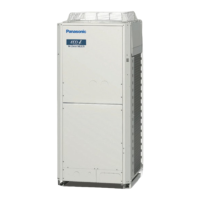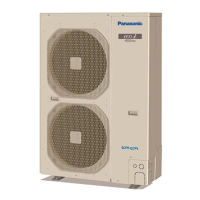Why is the outdoor unit fan on my Panasonic Air Conditioner still running after I turn it off with the remote?
- RRhonda MahoneySep 6, 2025
Fan rotating makes operation smoothly.

Why is the outdoor unit fan on my Panasonic Air Conditioner still running after I turn it off with the remote?
Fan rotating makes operation smoothly.
Why is my Panasonic U-60PEY1E5 making noise?
There are several reasons why your Panasonic Air Conditioner might be making noise. It could be due to the sound of refrigerant liquid flowing inside the unit, drainage water moving through the drain pipe, or temperature changes affecting the unit's parts. Indoor odor components, cigarette odor, and cosmetic odor accumulated in the air conditioner and its air is discharged. Also, if the unit inside is dirty, especially if it's been installed in a place with a lot of oil mist, it may require cleaning by a dealer. Other causes include defrost operation, smooth fan rotation, the fan drying the heat exchanger, horizontal wind flow during heating or defrost, flap movement, dust discharge, or operation checks.
Why does my Panasonic Air Conditioner smell when it's running?
The discharged air might smell because indoor odor components like cigarette or cosmetic odors have accumulated inside the Panasonic Air Conditioner, and now this air is being discharged.
Why is my Panasonic U-60PEY1E5 making noise during heating?
The noise you hear during heating operation is likely because the defrost operation is in progress.
Why does my Panasonic Air Conditioner sound like streaming water?
The streaming water sound you hear is the sound of refrigerant liquid flowing inside the unit.
What causes cracking noises in my Panasonic U-60PEY1E5?
The cracking noise you hear during operation or when the operation stops is due to temperature changes of parts.
| Brand | Panasonic |
|---|---|
| Model | U-60PEY1E5 |
| Category | Air Conditioner |
| Language | English |
Symbol refers to hazard resulting in severe personal injury or death, or personal injury or property damage.
Avoid fumes, flammable gases, high heat objects, salty sea air, or sulphurous air.
Turn on power mains at least 5 hours before operation to warm up the system.
Wiring must conform to codes, unit must be grounded, done by qualified electrician, and power isolated when not in use.
Consult dealer for refrigerant, avoid wet hands, flammable vapors, explosive atmosphere, ensure ventilation.
Stop operation, disconnect power, contact dealer for trips, smells, noise, leaks, or overheating.
Use ON/OFF button, avoid inserting objects, keep fire alarm away, supervise children, avoid extreme temperatures.
Contains fluorinated greenhouse gases, do not vent, check for leaks based on local legislation.
Dispose of old products and batteries at designated collection points according to national legislation and EU directives.
Diagrams and labels for 4-Way Cassette (U1, Y1) and Ceiling (T1) indoor units.
Diagrams and labels for Wall Mounted (K1) and Ducted (F1, N1) indoor units.
Information on optional wireless and wired remote controllers for indoor units.
How to change airflow direction using the FLAP button.
Steps to initiate automatic up-and-down airflow swing.
How to stop flap movement and set a fixed airflow position.
Details on auto flaps, cleaning, and manual flap adjustment for U1/Y1 types.
Vertical airflow is automatic, horizontal is manual; cautions for cooling mode.
No built-in air outlet parts; refer to local air outlet manual.
Using the UNIT button to select individual units for airflow setting.
How unit numbers are displayed for single and multiple outdoor/indoor unit configurations.
Describes DRY mode, heating performance based on outdoor temp, and automatic defrosting.
Explains when the standby indicator is displayed during heating or defrosting.
Emphasizes turning off power and avoiding water on the indoor unit to prevent damage and shock.
Warns against solvents, hot water, sharp edges, and advises consulting dealer for outdoor unit cleaning.
Lists common indoor unit issues like noise, odor, fog, fan behavior, and dust, with their causes.
Lists common outdoor unit issues like no operation, noise, steam, and fan operation after stop, with their causes.
Verify power, operation button, fuse, intake/outlet blockages, wind speed, and temperature settings.
Stop operation, power off, contact dealer, and report specific model/symptom details if problems persist.
Avoid blocking unit airflow, use sunshades/curtains, and regularly clean air filters.
Keep windows and doors closed to prevent conditioned air from escaping.












